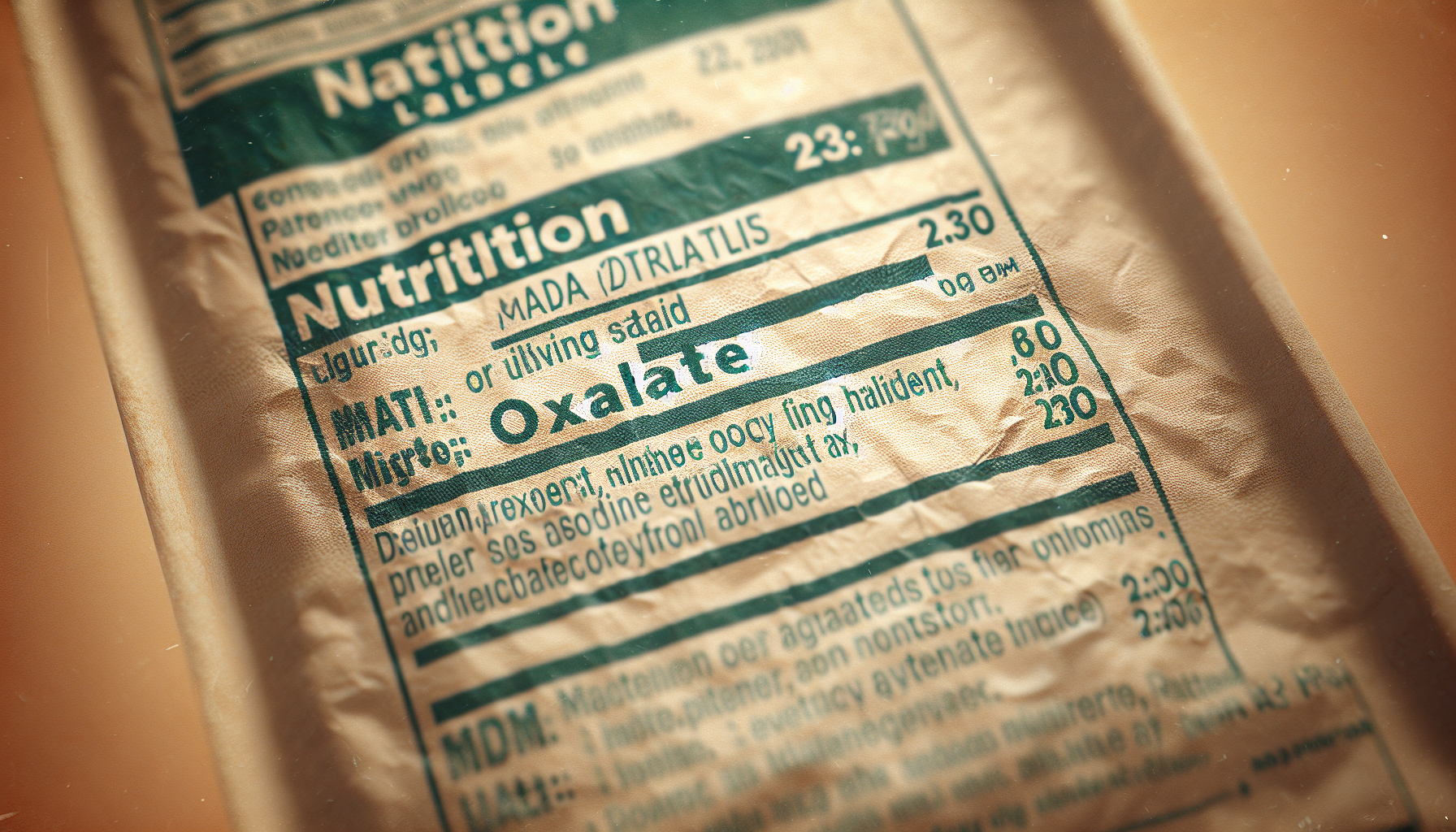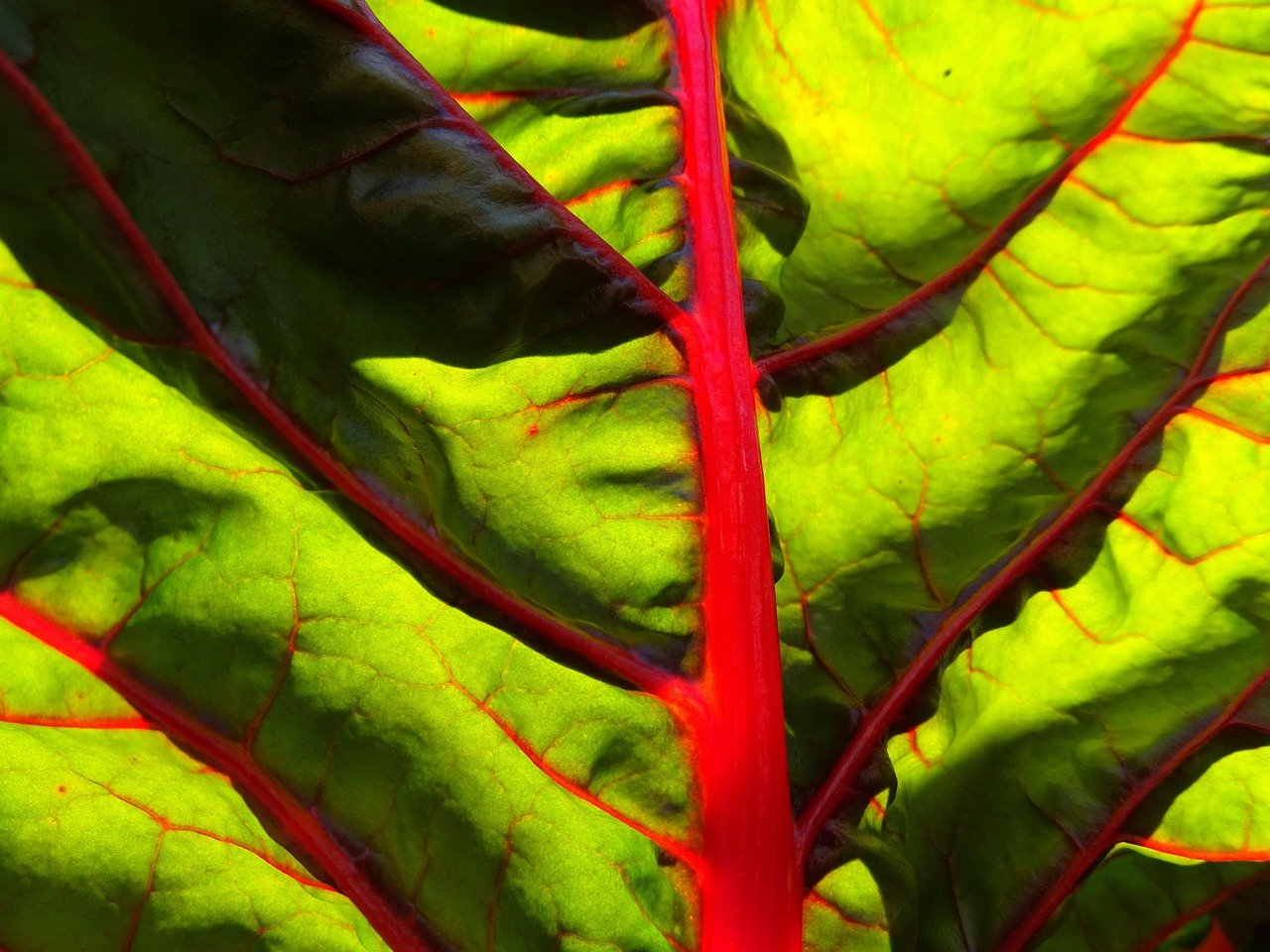Have you ever found yourself staring at a nutrition label, trying to decipher everything it has to offer? If you’re learning how to manage your oxalate intake, you might be spending a lot of time examining those labels, wondering which foods are friendlier to your dietary needs. Understanding food labels can be a game-changer when it comes to your health, and it can be empowering when making decisions about what to eat.

What Is Oxalate and Why Is It Important?
Oxalate is a naturally occurring compound found in many foods. For some individuals, especially those susceptible to certain types of kidney stones, managing oxalate intake is crucial. High levels of oxalate in your body can lead to the formation of calcium oxalate stones in your kidneys, causing pain and discomfort. So, being aware of what you’re consuming becomes an essential part of your everyday life.
Why You Should Care About Oxalate Levels
You might think that oxalates are not worth the concern, but here’s why you might want to pay attention:
- Health Risks: If you have a history of kidney stones or certain other health conditions, excess oxalate can exacerbate issues.
- Dietary Changes: Knowing which foods are high in oxalates can help you make informed dietary choices, ultimately improving your quality of life.
Understanding oxalate and monitoring your intake means you are taking proactive steps toward better health.
How to Read Food Labels
Food labels contain essential information that can guide you in making informed choices. Knowing what to look for can be a bit tricky, but once you know the ropes, it becomes second nature.
Nutritional Information
At the top of the food label, you’ll usually find a section marked “Nutrition Facts.” This part offers a snapshot of the key nutritional components of the food. It lists the number of servings per container, total calories, and the breakdown of macronutrients. Here’s the big takeaway: focus not only on calories but also on the grams of fiber and sugar, as these can play a role in how your body responds to the food, especially in conjunction with oxalate content.
Ingredients List
The ingredients list reveals what’s actually in your food. Read it carefully, as items are listed in descending order by weight. If a food contains a lot of high-oxalate ingredients (like spinach, rhubarb, or almonds), it’s likely not the best option for you. Look for:
- Whole Foods: Whole grains, fruits, and vegetables are often lower in oxalates than processed foods.
- Additives: Some preservatives or artificial ingredients can increase oxalate levels or have other effects you might want to avoid.
If you see high-oxalate ingredients near the top of the list, it may be best to put that item back on the shelf.
Serving Size
The serving size is crucial in understanding the nutritional information relative to how much you’re actually going to eat. Pay attention to the serving size and ask yourself: “Am I going to eat this much?” If you normally consume double the serving size, you may want to double the oxalate content for your personal calculation.
Daily Values
You’ll often see percentages next to certain nutrients on food labels, indicating how much a serving contributes to your daily recommended intake. Although you may be more familiar with counts like total fat and sugar, pay special attention to the fiber and calcium content.
Fiber can help mitigate the effects of oxalate in your system, while calcium binds to oxalate in your gut, which can help limit absorption. More fiber and calcium in your diet is generally helpful, but always consult with a healthcare provider to figure out the proportions that work for you.
Identifying High-Oxalate Foods
Navigating food labels can feel overwhelming, especially if you’re trying to steer clear of high-oxalate foods. Understanding which ingredients or whole foods you should generally avoid can save you the hassle.
Common High-Oxalate Foods
To make it easier, here’s a list of some foods that typically contain high levels of oxalates:
| Food Group | Examples |
|---|---|
| Vegetables | Spinach, beets, swiss chard, and rhubarb |
| Fruits | Berries, kiwi, and grapes |
| Nuts and Seeds | Almonds, cashews, and peanuts |
| Grains | Wheat bran and oatmeal |
| Chocolate | Dark chocolate and cocoa |
Low-Oxalate Alternatives
Just because some foods are high in oxalate doesn’t mean you have to sacrifice flavor or nutrition. Here are some lower-oxalate alternatives to consider:
| High-Oxalate Food | Low-Oxalate Substitute |
|---|---|
| Spinach | Kale or iceberg lettuce |
| Almonds | Walnuts or pecans |
| Rhubarb | Apples or blueberries |
| Whole wheat bread | White bread or rice |
| Dark chocolate | White chocolate or vanilla |
By intentionally choosing low-oxalate substitutes, you can still enjoy the pleasure of eating without putting your health at risk.
Understanding Food Label Claims
You may come across terms like “organic,” “gluten-free,” or “low-fat” on food labels. But do these claims matter when it comes to oxalate content? Let’s break down some of these common phrases.
Organic
Organic foods are grown without synthetic pesticides or fertilizers. However, being organic doesn’t inherently mean that a food item is low in oxalates. Always check the ingredients and nutritional information regardless of organic labeling.
Gluten-Free
While gluten-free products cater to those with celiac disease or gluten intolerance, they may not be low in oxalates. Sometimes, gluten-free foods replace wheat with high-oxalate ingredients like almond flour. Always do your homework.
Low-Fat
Low-fat can sound appealing, but sometimes less fat comes at the expense of higher sugar or oxalate levels. Don’t get too distracted by marketing; focus on the actual contents of the food.

Putting It All Together
Now that you have the tools to understand food labels better, how do you implement what you’ve learned in a way that’s effective for your lifestyle? Here are some actionable tips for you to keep in mind.
Plan Your Meals
Meal prepping can reduce the stress of making healthy choices on the fly. Take some time each week to plan meals that are balanced and low in oxalates. This will also help you avoid grabbing high-oxalate snacks when you’re hungry and in a hurry.
Keep a Food Journal
It’s beneficial to maintain a food diary that tracks your meals and their oxalate content. This allows you to reflect on how your dietary choices affect your well-being and make adjustments as needed.
Consult a Nutritionist
If this seems overwhelming, consider consulting a registered dietitian or nutritionist who understands oxalate awareness. They can provide tailored advice, meal plans, and support to help you navigate through your dietary needs.
Supplements and Other Considerations
While focusing on your diet is important, supplements can also play a role in managing oxalate levels. Discussing this with your healthcare provider can help you figure out whether supplements might complement your dietary efforts.
Calcium and Magnesium
Both calcium and magnesium can be beneficial in managing oxalate levels. These minerals bind to oxalate in the gut, making it less bioavailable and helping to prevent its absorption. However, dosage and source matter. Make sure to get advice on the best options for you.
Probiotics
Recent research has suggested that certain probiotics can help reduce oxalate levels in your body. Look for reputable brands that contain beneficial strains like Lactobacillus or Bifidobacterium.

Myths About Oxalates
In your quest for understanding, you might come across various myths surrounding oxalates. Let’s address some common misconceptions.
Myth 1: All Vegetables Are High in Oxalates
While it’s true that many vegetables contain oxalates, it’s a nuance. You should focus on the type of vegetable in question. Lots of leafy greens are healthy and nutritious — just be mindful of your intake.
Myth 2: Cooking Eliminates Oxalate Content
Cooking can reduce oxalate levels in certain foods, but it doesn’t completely eliminate them. For instance, boiling spinach can lower its oxalate content, but it’s still significant. Careful consumption still matters.
Myth 3: You Should Avoid All Oxalates
Not all oxalates should be vilified. For many people, it’s about moderation and awareness. Your goal doesn’t need to be complete elimination but rather managing intake based on your unique health needs.
Final Thoughts
Navigating your dietary options when it comes to oxalates may feel complicated, but you now have the foundational knowledge to read labels effectively. Whether it’s understanding nutritional information, identifying high-oxalate foods, or making intentional substitutions, you’re equipped to take control of your choices.
As you embark on your journey towards oxalate awareness, remember that balance and mindfulness take time to cultivate. By being proactive, you’re setting yourself up for a healthier relationship with food – one that respects your body’s needs while still allowing for pleasure and enjoyment at the table.


